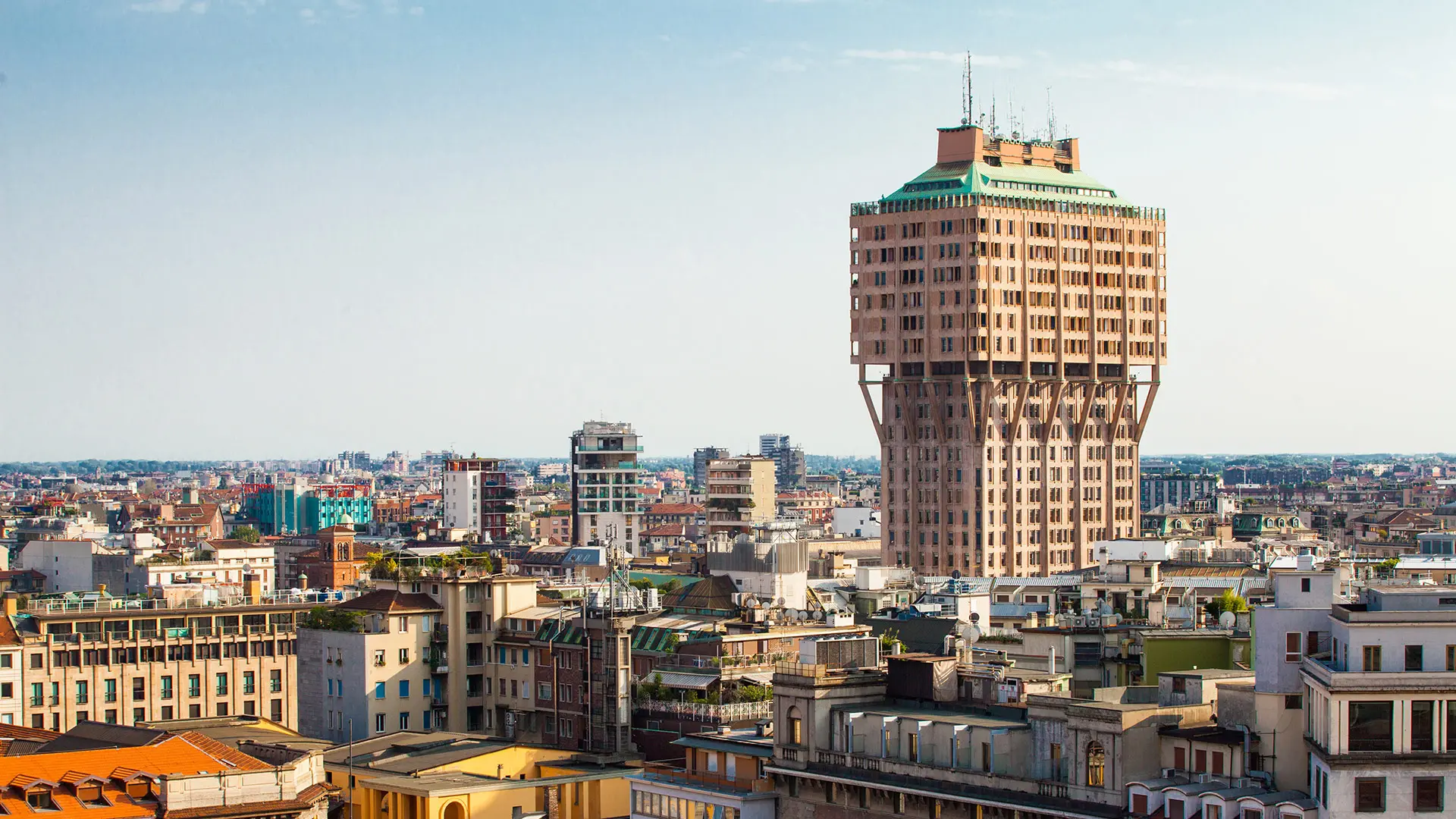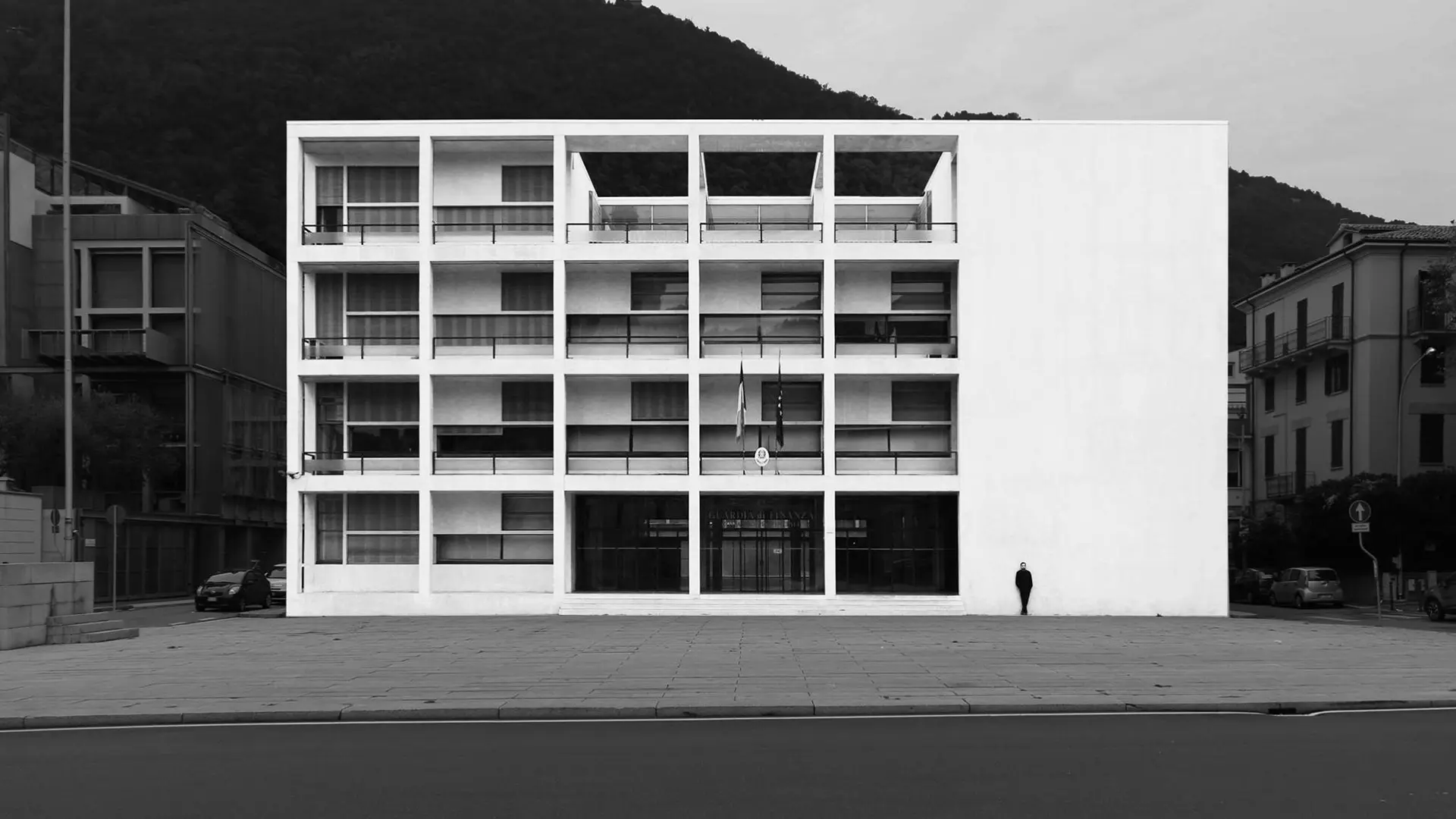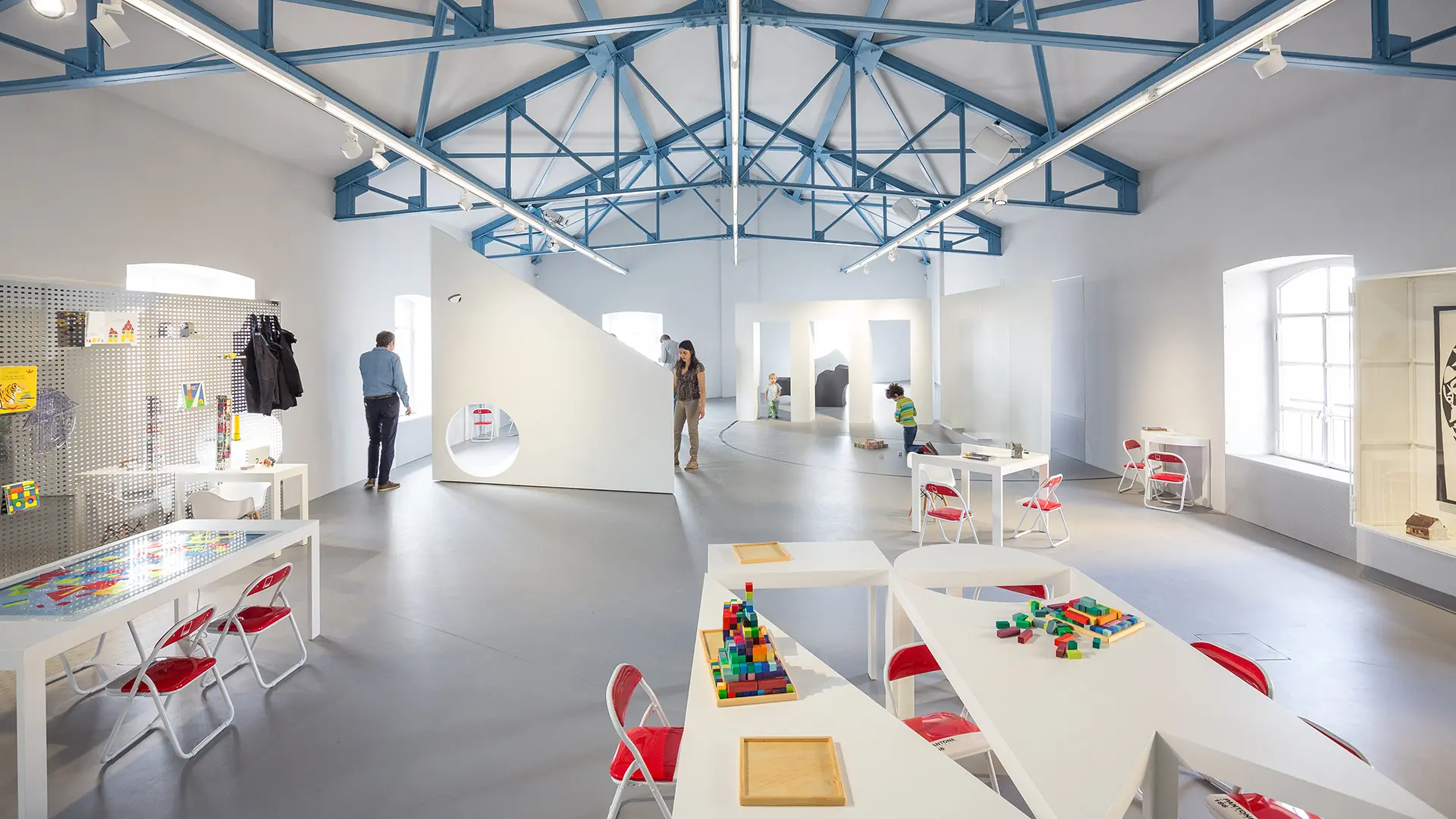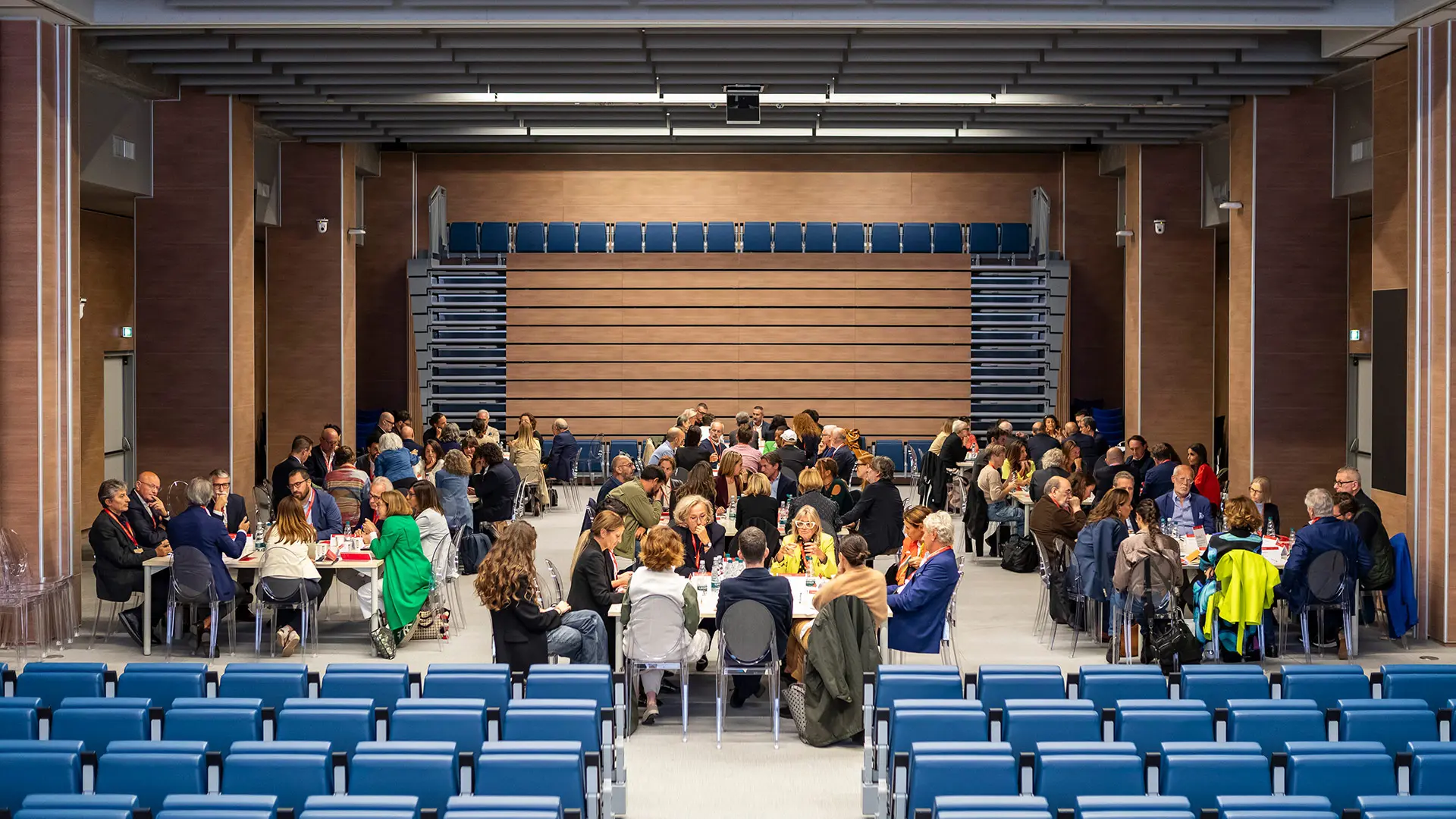Pure volumes, minimal or non-existent decoration, primacy of functionality, harnessing new materials: from the Casa del Fascio in Como to the railway station in Florence, the story of an experimental period that, after almost a century and several attempts at damnatio memoriae, remains a tangible presence in Italy.
What imagery for Milan?

The identity of a city is largely made up of representations. There have been specific moments at which the demands of cinema and the appearance of Milan have come together, influencing their reciprocal images.
If one wanted to concoct a comparative study to try and establish what characteristics made a city attractive from a cinematic point of view, we would probably conclude that these parameters would depend on innumerable, uncontrollable, if not completely random, variables. At a certain point in its history, a city might lend itself as a set for one reason just as easily as for the complete opposite. Mostly it’s a matter of being the right city at the right time. Let’s take Milan as a case study. First of all a possible preconception has to be got out of the way: being – or considering oneself – particularly cool is no guarantee of success. Largely thanks to Woody Allen’s Match Point, a certain image of the new London on the South Bank took hold, but no single memorable film appears to have been made in Milan over the last decade, during which time it has been lauded as the most contemporary and cosmopolitan place in Italy, rising up the tourism ranks to become the leading Italian destination.
Three golden moments in Milan’s film imagery stand out in particular. In the early Fifties, post-war Milan with its variegated landscape of rubble and skyscrapers, displaced people and grand palazzi served as the setting for works such as Miracle in Milan (De Sica, 1951) and Story of a Love Affair (Antonioni, 1950). While in the former the homeless camp installed in the shadow of the “Kremlin” of Città Studi, in what is now a central area, is striking, in the latter the dynamic between Aldo Andreani’s Palazzo Fidia, in which the protagonist Lucia Bosè conducts her bourgeois love affair, and Milan’s outlying areas (the Idroscalo and the Navigli canal loop) were still countryside, not yet tacked onto the urban fabric in which the love/passion harnesses the toponomy in a psycho-geographical sense. Again, a decade later, Antonioni’s used the city in La Notte, to characterise Jeanne Moreau’s walk to Sesto San Giovanni from the apartment in a modern skyscraper which she shares with Marcello Mastroianni and the lack of understanding and communication in modern relationships, as if tracking back to when life was purposeful, distancing herself from the cultural malaise of the city.
The first half of the Sixties was marked by the economic boom and the consequent film boom in Milan, the glass block city of industry and the tertiary sector and therefore an ideal candidate for a backdrop for opportunities and disasters of that historical period. Rocco and His Brothers (Visconti, 1960) was released. The social ascent of the Parondi immigrant family from Lucania is also a metaphor for the progress from their suburban basement flat to the historic centre. One of the most famous scenes shows the breakup between Alain Delon and Annie Girardot depicted as if they were tourists, among the spires of the Duomo. The same dynamic is applied to internal immigration within the Lombard region in The Job (Olmi, 1961). The young protagonists take a romantic walk along the building site of the new underground in Piazza San Babila: even romantic locations are carved into the interstices of a changing city, building upwards and downwards with no room for sentiments. It’s a Hard Life (Lizzani, 1964) is an adaptation of a novel by Luciano Bianciardi, illustrating the dehumanising effects of the detonation of economic progress as it sparks an interior detonation that wipes out the anarchic-libertarian drive of the individual, robbing him of the urge to blow up the “torracchione” headquarters of the Montecatini mining company. Whilst at that time Milan was chosen for its ambiguous dynamism, the city again rose to cinematic popularity in the early Seventies, during the terrorist years, for diametrically opposed reasons. It became a grey, sad city, a victim to smog and extremism. In 1970 Liliana Cavani chose it as the setting for The Cannibals, a Foucauldian apology for the violence of power. There then followed the period of detective stories and films linked to current events. Slap the Monster on Page One (Bellocchio, 1972) and San Babila, 8 P.M (Lizzani, 1976) depict different sides of political violence, carried out both by young extremists and by the forces of power. In the latter, in particular, the San Babila district with its network of galleries, where right wing youths hung out, provides the perfect labyrinthine setting and trap for a chase. Almost Human (Lenzi, 1974), the precursor of the genre, not only paints a picture of a sad and filthy Milan, an objective correlative for moral degradation, but also an equally distressing picture of Rho, then still a country village, separated from the city by a band of meadows and fields. More recently there’s been very little, aside from I Am Love (Guadagnino, 2009) which simply revives Viscontian imagery, taking Pietro Portaluppi’s Villa Necchi-Campiglio as its focal point.










